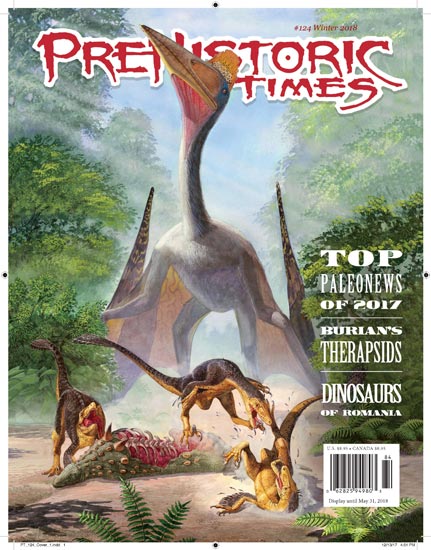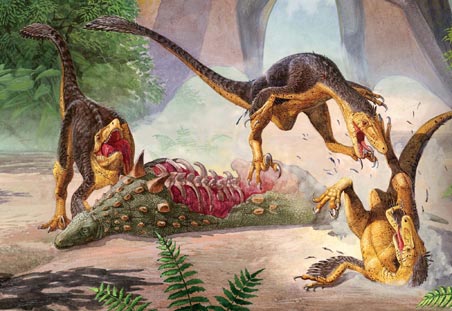The Front Cover of the Next Edition of Prehistoric Times Magazine
Editor Mike Fredericks has sent Everything Dinosaur an image of the front cover of the next issue of Prehistoric Times. Inside, there is a special article on the fauna of the Hateg Island, an isolated landmass in the middle of the shrinking Tethys Ocean that had a unique ecosystem with giant pterosaurs such as Hatzegopteryx (H. thambema) the likely apex predators.
The Front Cover of Prehistoric Times Magazine

Picture credit: Mike Fredericks (Prehistoric Times)
Dinosaurs of Romania
The rocks that formed the Cretaceous island are in Romania (Transylvania) and many of the dinosaurs found in these sediments are not found anywhere else. It was the famous Hungarian palaeontologist Franz Nopcsa who postulated that the finite resources on an island would lead to a reduction in body size for animals over subsequent generations. Nopcsa proposed a theory called “insular dwarfism”, that over time, island dwellers, due to limited resources such as food and space would become smaller. This idea is also known as the “island rule”.
Azhdarchid pterosaurs were capable of flying great distances and therefore, these giants were not constrained by islands. Giants like Hatzegopteryx have been depicted stalking horsetail groves snatching up dwarf titanosaurs such as a juvenile Magyarosaurus and swallowing it whole.
Fighting Over the Carcass of a Struthiosaurus

Picture credit: Mike Fredericks (Prehistoric Times)
Visit the Everything Dinosaur website: Everything Dinosaur.
The Unique Palaeofauna of Hateg Island
The close-up view of the cover (above) shows a trio of theropods fighting over the carcass of an armoured dinosaur. We suspect the victim is the nodosaurid Struthiosaurus, which at two metres long, typifies the concept of “insular dwarfism”. The animals fighting over the remains of the plant-eater, we think represent Balaur bondoc, a strange animal known from two specimens. When first described in 2010, it was thought B. bondoc was a dromaeosaurid, albeit one with two sickle-shaped claws on each foot. However, recent studies have interpreted it as a large, flightless bird, ironically flightless birds are another natural phenomenon associated with islands.
To read more about the discovery of Balaur bondoc: The Stocky Dragon from Hateg Island.
We look forward to receiving the next issue of Prehistoric Times.
For more information about this excellent magazine and to enquire about subscribing: Prehistoric Times Magazine.






Leave A Comment